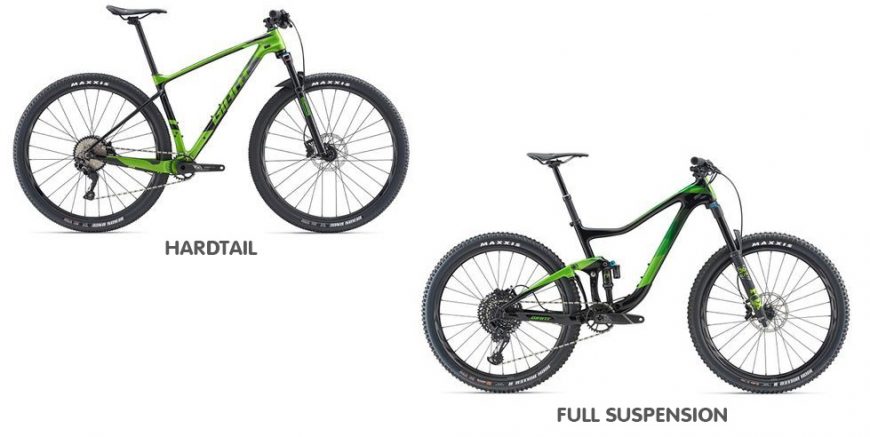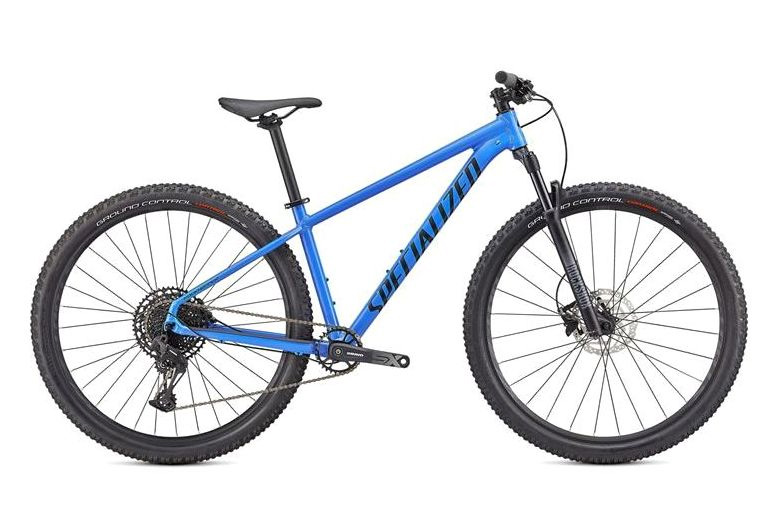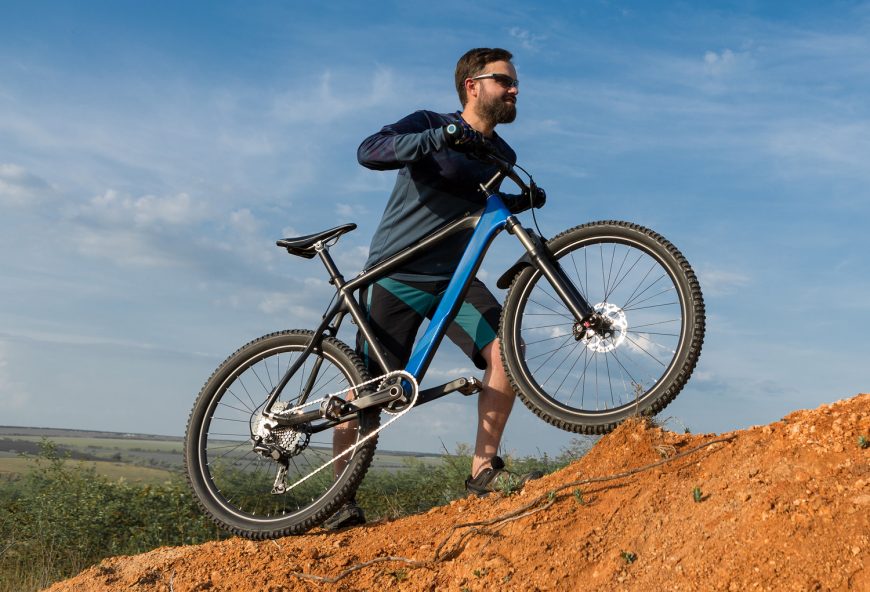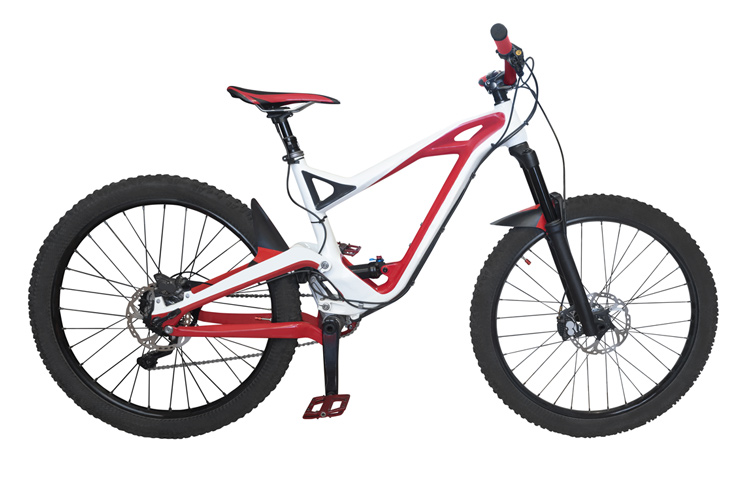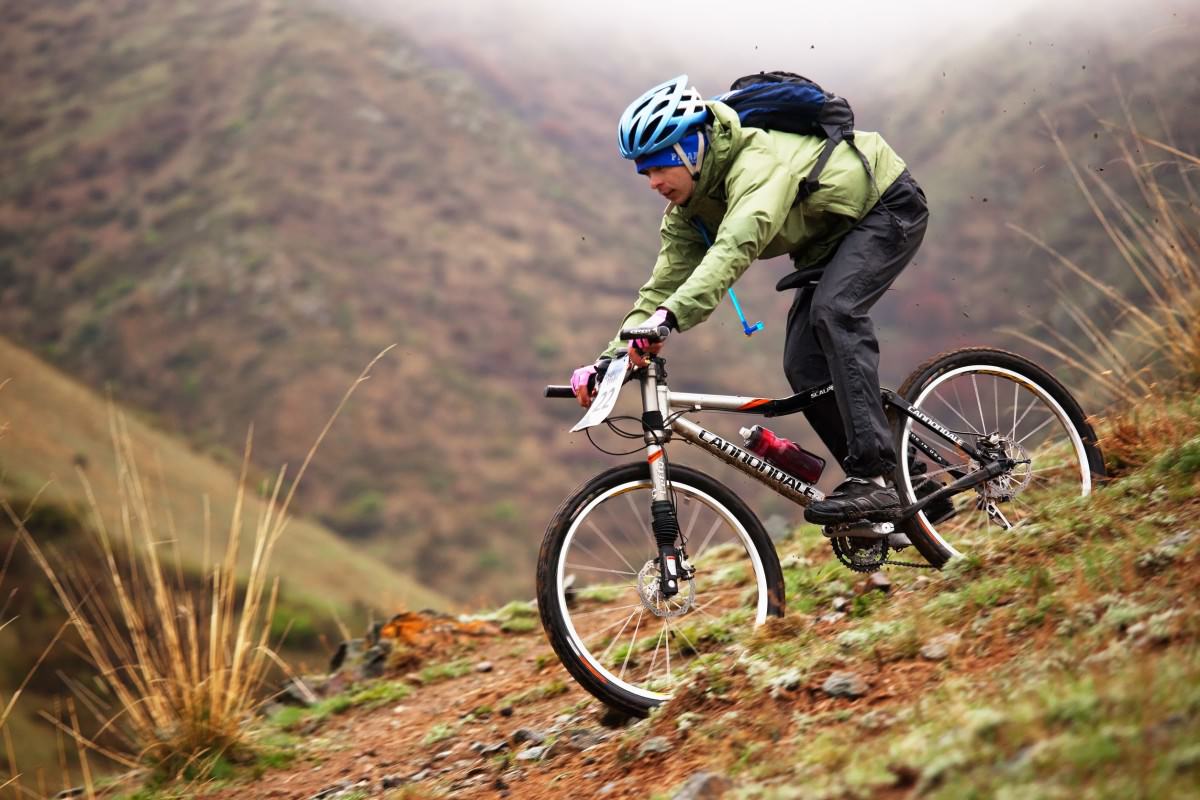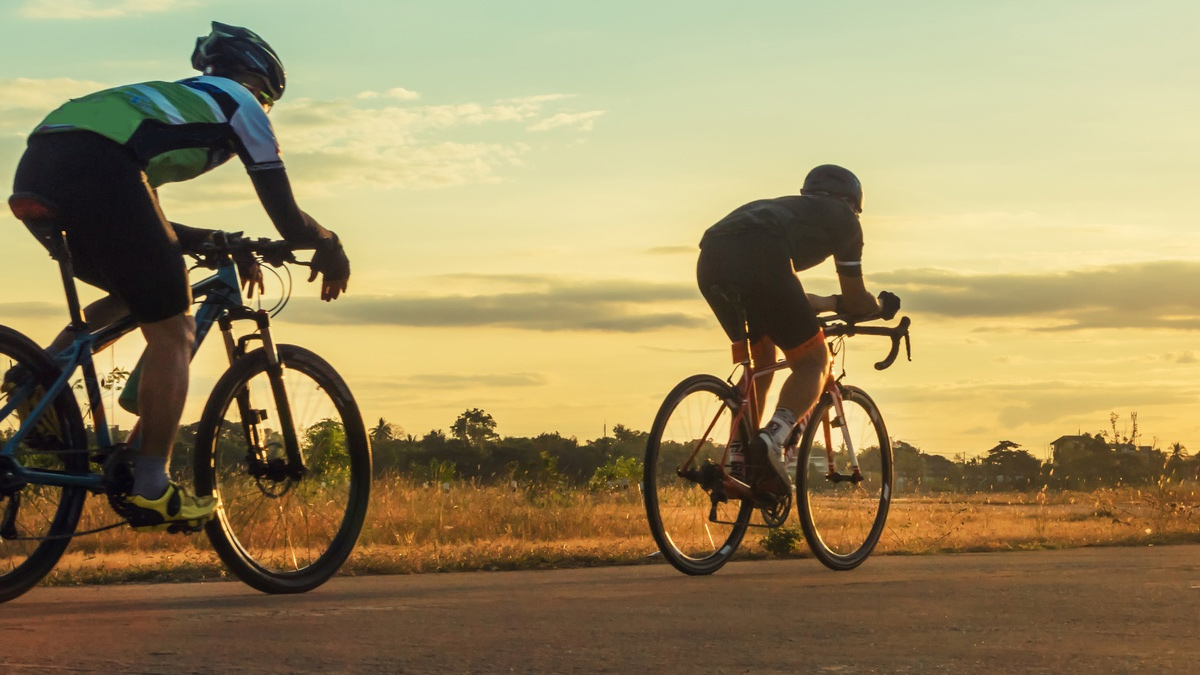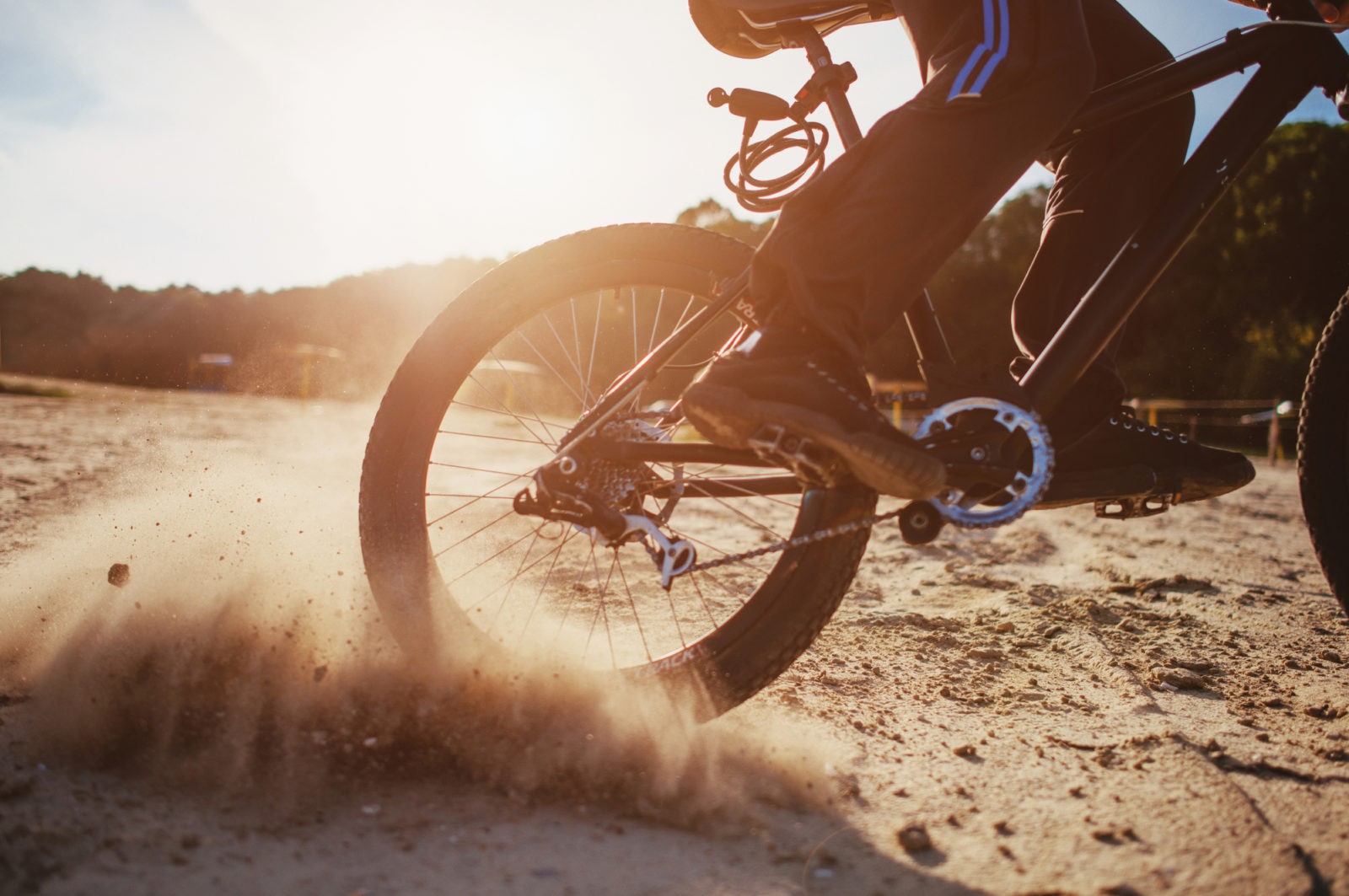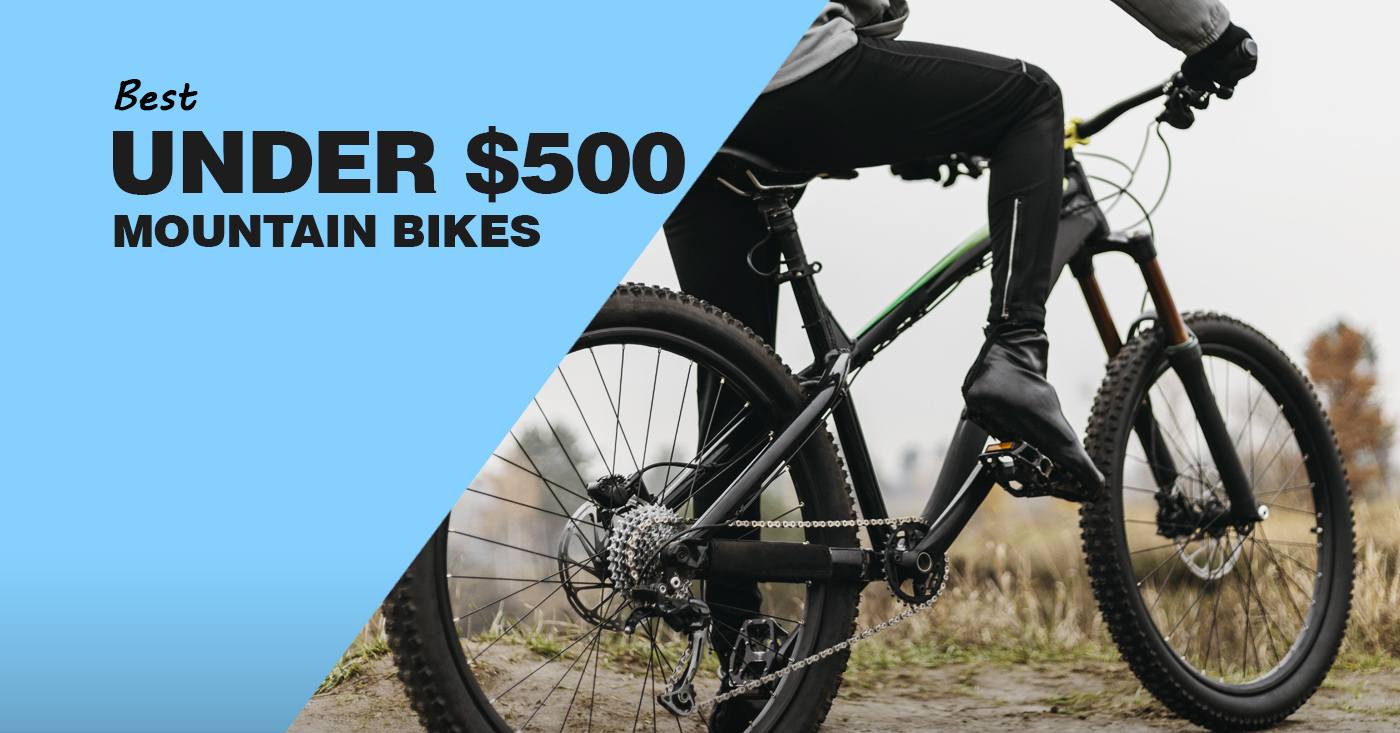When you are into mountain biking, there is this constant question that lingers in your mind: Is it better to get a hardtail or a full-suspension mountain bike? Well, to be honest with you, both of them have their perks. Yes, I hear you. It can be hard to decide on a certain kind of suspension. There is this fear of having an opportunity cost that I know I want to avoid for sure!
With a hardtail suspension, you get only a front suspension. While with a full suspension, it’s pretty obvious. There will be front and rear suspensions. But you can only have one of them. Which one you should go for? That’s a good question. Let’s compare the pros and cons of both types so you can make an informed decision.
I have had both types of mountain bikes and speaking from experience, here are the main differences that I have observed.
Hardtail Vs Full Suspension Mountain Bike- A Comparison
| Feature | Hardtail Mountain Bikes | Full Suspension Mountain Bikes |
|---|---|---|
| Cost | Budget-friendly; lower initial cost and maintenance | Expensive; higher initial cost and maintenance |
| Versatility | Versatile; suitable for commuting and touring | Specialized; optimized for off-road trails |
| Rolling Resistance | Less rolling resistance; better speed maintenance | More rolling resistance; may require more effort |
| Weight | Lightweight; easy to maneuver | Heavier; may impact maneuverability |
| Climbing Ability | Great climbers; suitable for hill climbing | Efficient climbers; good for technical trail ascents |
| Comfort | Less comfortable; transmits shocks and vibrations | More comfortable; rear shock absorbs shocks |
| Traction and Handling | Less traction; handling may be less precise | Better traction and handling; rolls over obstacles |
| Trail Speed | Slow on technical trails; requires cautious navigation | Faster on technical trails; more confidence |
| Skill Progression | Limited skill progression; may not inspire confidence | Better chance of skill progression; inspires confidence |
| Maintenance | Simple; basic maintenance | Requires more maintenance; specialized tools may be needed |
| Durability | More durable; less prone to damage from shocks | Less durable; prone to wear and tear from shocks |
| Beginner Friendliness | Suitable for beginners; allows learning essential skills | Not beginner-friendly; may hinder skill development |
| Efficiency | More efficient; less prone to technical errors | Less efficient; may experience issues with components |
Hardtail Vs Full Suspension Mountain Bike-My Pick
If by any chance you score a good Hardtail Mountain Bike, you will find that they are even lighter than some of the best and most expensive full-suspension mountain bikes. This can work well in your favor if you can use this to your advantage. I find these kinds of bikes to be very simple, as they don’t feature a shock and rear suspension in front and rear wheel, sometimes only a suspension fork.
Since you won’t have to spend your hard-earned money on a shock and rear suspension, you can easily use that money to get more parts for your bike, a stronger drivetrain, and better wheels perhaps?
The reason I prefer hardtail mountain bikes is that they have a lot of room for customization. I built my hardtail using the Kona Honzoframe. It gets the work done and lets me have fun. Nevertheless, it also depends on the kind of trail riding you want to do. If you want to ride technical trails comfortably then a Full-Suspension Mountain Bike can be an even better investment than a Hardtail.
You can customize the wheels however you see fit but that’s about it. But that does not compensate for the fixed rear triangle that Hardtails are known best for.
What Are Hardtail Mountain Bikes?
Do you love taking muddy rides, exploring rocky terrains, or just simply want to have a very low bike maintenance cost? Then your best bet is going to be the Hardtail Mountain Bikes, they offer amazing performance and are also budget-friendly to own and maintain.
If we compare these bikes to Full Suspension then there is an absence of shock absorption and linkage bearing since they lack both a suspension fork and a front and rear suspension system. Although this loss keeps the maintenance costs to a minimum, riding these bikes can also be hard sometimes.
Your riding style will matter a lot here. Do you want the bike for adventures or want to use it as an all-purpose bike? The fun thing with these bikes is that they act as commuter bikes. With a few modifications, you can use them for touring as well. Just make sure that the right parts are equipped.
Different Types of Hardtail Mountain Bikes
There are different types of Hardtail Mountain Bikes that you can enjoy.
Types
- XC (Cross-Country)
- Trail Hardtail Bikes
- Electric Hardtail Bikes
- Enduro Hardtail Bikes
- Jump Bikes
What Sets Them Apart?
There are plenty of features that set Hardtail Mountain Bikes apart, these features also make them useful in specific scenarios.
Top Features
- Strong Front Suspension Fork
- Have Fewer Moving Parts (Less Maintenance)
- Lighter Design
- Rigid Rear Fork
Best Mountain Bikes Reviewed
- Best Mountain Bikes For Beginners
- Best Mountain Bikes Under $300
- Best Mountain Bikes Under $500
- Best 20-inch Mountain Bikes for Kids
- Best Kids Mountain Bikes
- 20 Best Mountain Bike Pedals
What Are Full-Suspension Mountain Bikes?
With the full suspension mountain bikes, you will always be protected against every kind of shock and absorption. If you worry about inflicting an injury while riding then these bikes will be our best bet. If you are planning to expand your skillset, and just be better at riding while also being safe then I would say that you should get full suspension bikes.
What I like about full-suspension mountain bikes is that they allow you to ride professionally on the most demanding trails without many problems, with harsh terrains, the training opportunities are also refined.
From my experience, I can say that hardtail bikes cannot handle rocky and technical terrain properly. This is where the full-suspension bikes come in. Your progression will be smooth.
What Sets Them Apart?
Suspension bikes feature a lot of important aspects, these features set them truly apart from a hardtail bike.
Top Features
- Two Powerful Suspension Points: Front and Rear Suspension
- Powerful Structure
- More Technologically Advanced Construction
- Better For All Sorts Of Riders Especially Those That Are Not Physically Fit
Learn More About Mountain Bikes:
Guides and Tips:
- How To Change Mountain Bike Handlebar Grips
- Mountain Bike Size Chart, Guide, Frame and Geometry
- Best Mountain Bike Helmets
- Expert Biker Explains How To Find Good Cheap Mountain Bikes
- Should Electric Mountain Bikes Be Illegal?
- 21 Tips To Look Like A Beginner On Your Mountain Bike
- How To Find Your Best Mountain Bike Frame Size
- 7 Reasons You Should Go For Mountain Bike Disc Brakes
- Why A Single-Speed Mountain Bike Is The Best Choice
- How to Select the Best Mountain Bike Tires and Rims
- The Women’s Mountain Bikes Scam (Why You Should Not Buy a Women’s Mountain Bike)
FAQs
What are hardtails better for?
Hardtails are better for smoother trails. They are also the go-to option for cross-country (XC) riding and climbing.
Do pros use hardtail?
Yes, some pros use hardtail for cross-country riding.
Is hardtail better for beginners?
Most beginners prefer hardtails because they are easier to maintain and also simpler to ride. They are also the more affordable option.
Can you jump on a hardtail?
Yes, you can use hardtail for jumps but they won’t be as comfortable as a full-suspension.
Are hardtail bikes faster?
Yes, but it depends on the kind of trail that you are riding on.
Are hardtails good for long distance?
Hardtail bikes are not as comfortable so they may not be the best choice for long routes. Especially if the trail is rough.
The Verdict
Hardtail bikes are best for beginners, and advanced riders alike. When I started my mountain biking journey, I benefited the most from them. I had more room to explore my interests since the bikes were durable, and I was not afraid to go on rocky trails. It did take double the effort though!
However, if you want some intense action then full-suspension bikes would be the best option since they require half the effort. Full-suspension bikes are heavier in comparison and are even more expensive but they offer amazing ride quality. You just have to keep a focus on your balance without worrying about obstacles that much.
Now that you know the advantages and disadvantages and which will suit you best in the long run of both bikes, Which one are you going to vote for? Let me know in the comment section below. Happy Ridding!
Should you have any questions or require further clarification on the topic, please feel free to connect with our expert author Luke Ameen by leaving a comment below. We value your engagement and are here to assist you.


